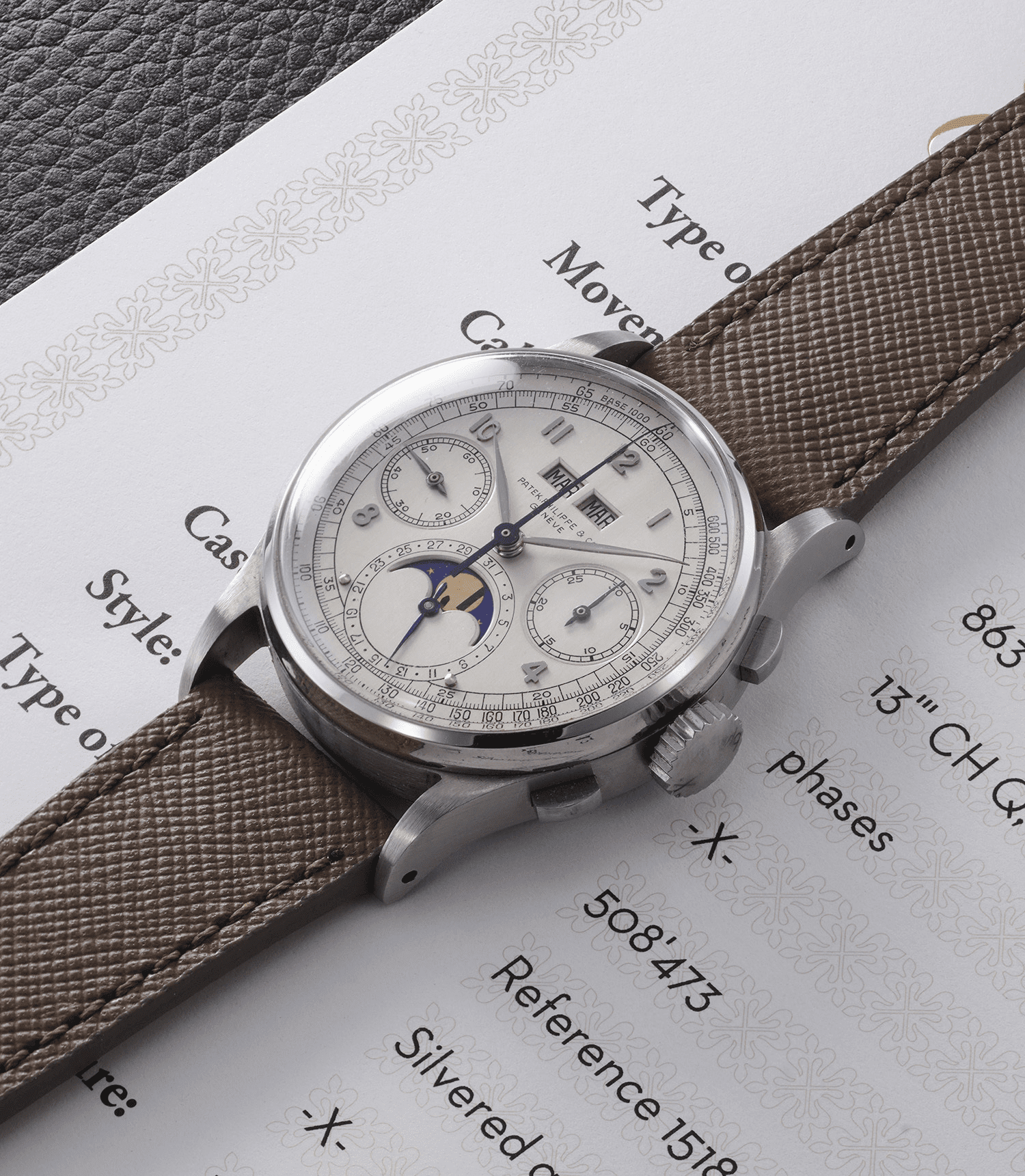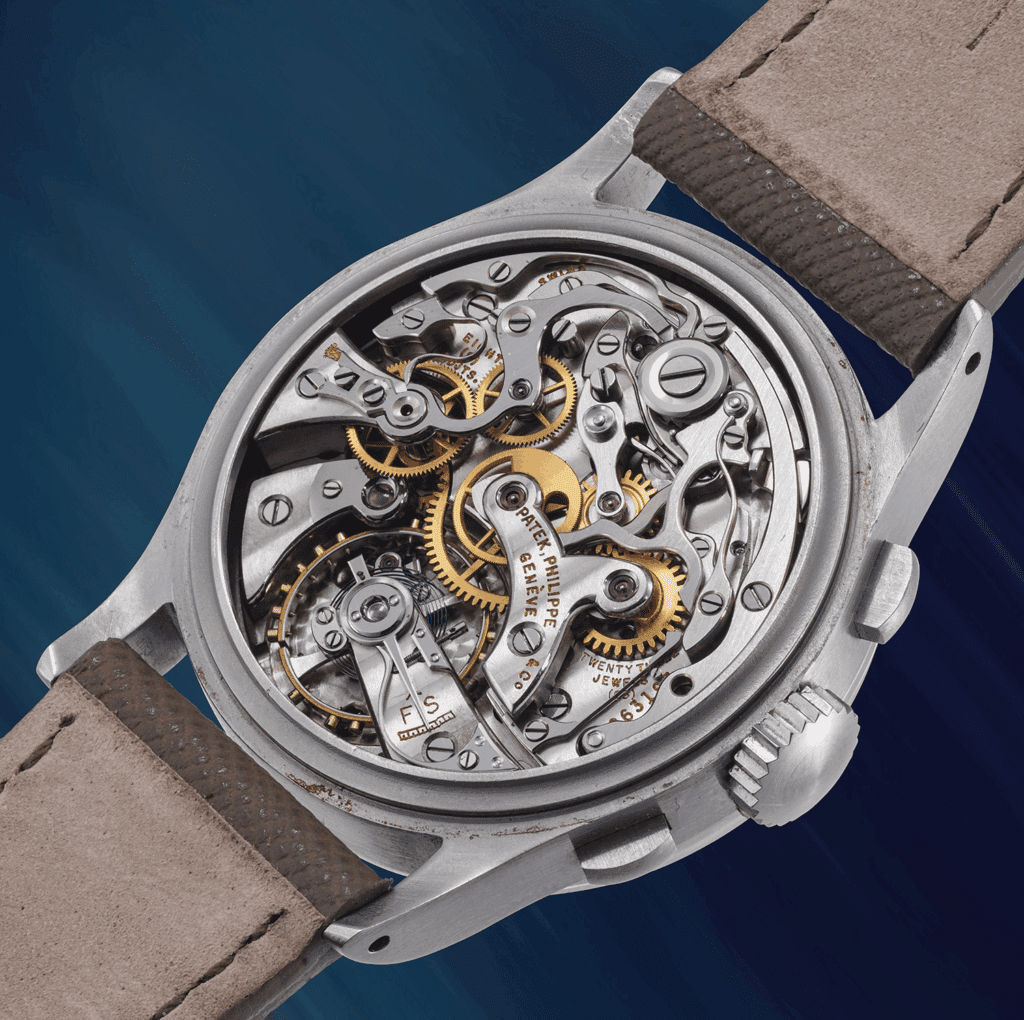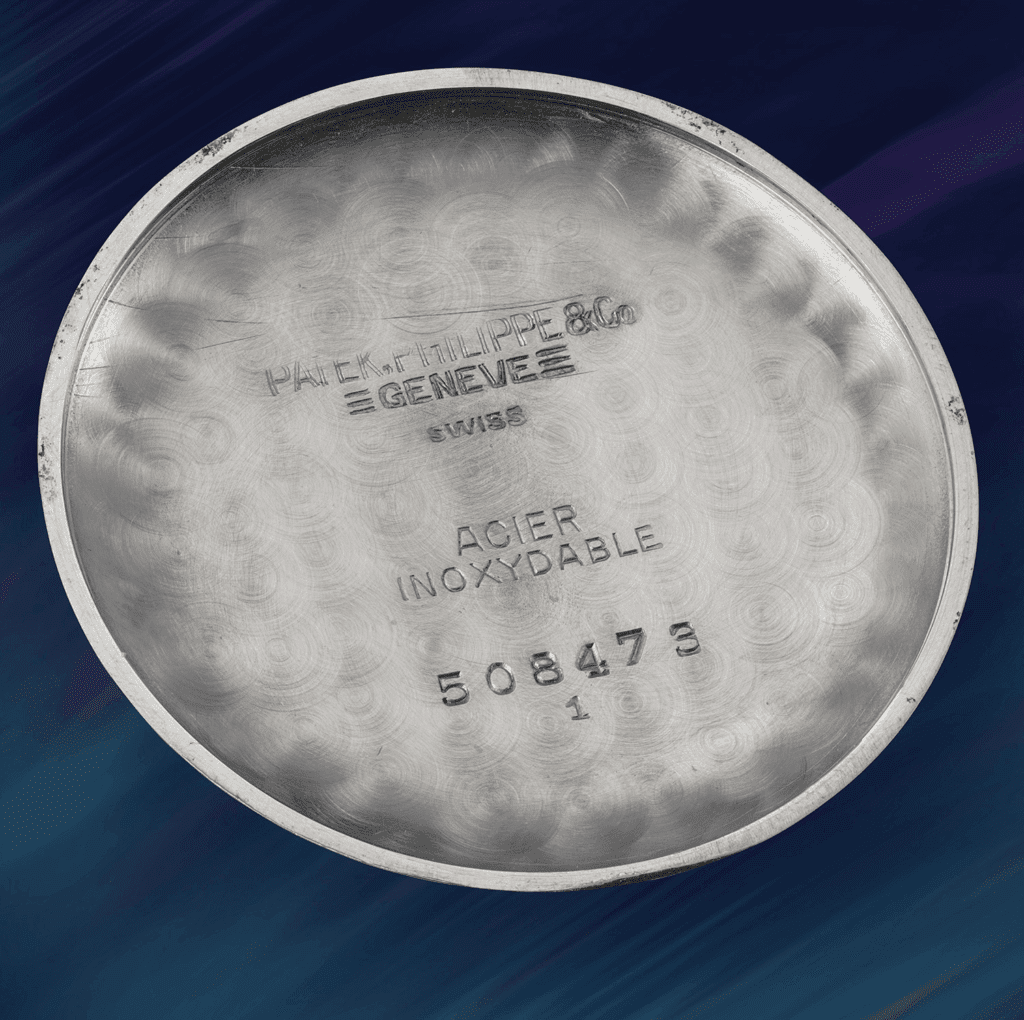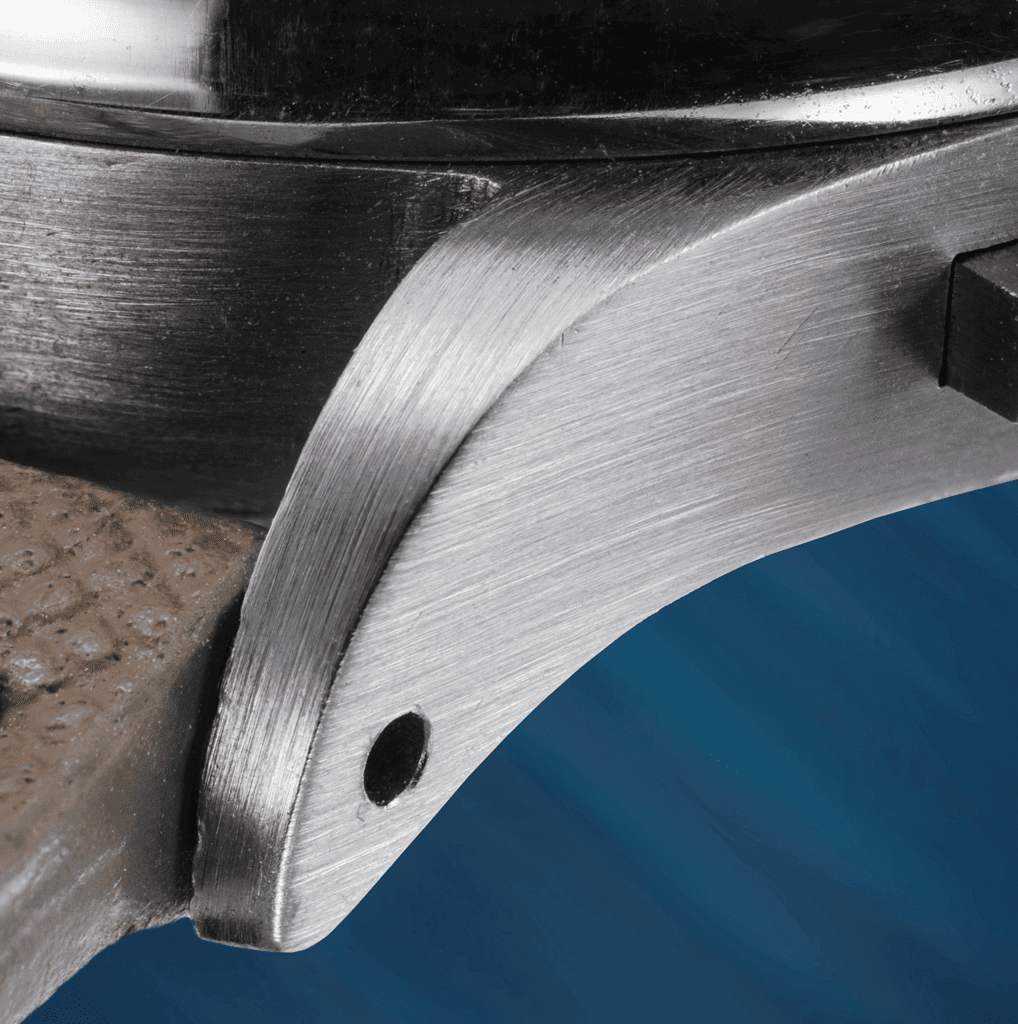In November 1944, with war still reshaping Europe, a man named Joseph Lang walked out of a Patek Philippe retailer in Budapest with a wristwatch that would become iconic. It had no gold case, no gemstones, and no decorative flourish. It was made of stainless steel. And yet it housed a perpetual calendar, a chronograph, and the quiet precision that would come to define modern watchmaking.
Eighty-one years later, that same watch has become the most expensive vintage Patek Philippe wristwatch ever sold at auction. Tonight, at Phillips in Geneva, it achieved a winning bid of 14.2 million Swiss francs, or roughly 17.6 million dollars.
It is an extraordinary figure. But this was never just a watch.
The First of Four
The reference 1518, introduced by Patek Philippe in 1941, was the first wristwatch to pair a perpetual calendar and chronograph in serial production. Over the next 14 years, 281 examples were produced, nearly all in gold. Only four were made in stainless steel. This example, case number 508473, is believed to be the first. A small engraved “1” inside the caseback marks its place in the sequence.
Steel was not typically used for complicated watches in the 1940s. It was functional, reserved for instruments and everyday wear. Why Patek chose it for this small run remains unclear. It may have been a wartime necessity, a test, or a quiet commission. Whatever the reason, Patek never repeated it.

Preserved at Every Level
The watch remains in extraordinary condition. The case, made by Georges Croisier, shows no signs of polishing. The surfaces are sharp and well defined. The lugs retain their original geometry, and the pushers and crown are correct and undisturbed.
Inside, the manually wound Caliber 13’’’130 Q is as refined as any movement of the period. Beneath the dial, the backs of the calendar discs are engraved with the full movement number. These details were never meant to be seen. They were completed by hand because that was the standard.
The dial itself was made by Stern Frères and shows no restoration. The black enamel signature is crisp, the scales precise, and the layout balanced. It offers complexity without clutter, form without excess.


A Watch from an Unstable Time
Joseph Lang purchased this watch on February 22, 1944. At that point, Hungary had broken its alliance with Nazi Germany. The country was uncertain, and the future unknown. Lang also acquired a second steel 1518 that day, both watches delivered to him in Budapest. Their purpose remains undocumented. What is known is that both remained in Hungary for decades, eventually resurfacing in the late 20th century.
To buy a timepiece of this significance in a moment of political and social collapse suggests something beyond collecting. It reflects a belief in what endures.


Back at Auction
This same watch set a record in 2016, when it sold at Phillips for just over 11 million francs. At the time, it was the most expensive wristwatch ever sold. This year, it returned to auction and surpassed that figure. Bidding was limited to those in the room and on the phone. It unfolded slowly. The watch was not marketed as a spectacle. It did not need to be.
The new result reflects more than rarity. It is a recognition of historical weight and uncompromised condition. Few watches, vintage or modern, carry both.
Why This Watch Matters
Records come and go, but certain watches remain. The Ref. 1518 in steel is one of them. It is not famous for its materials, nor its size or design. It is respected because of what it represents. A mechanical achievement. A wartime artifact. A piece of watchmaking history that sits quietly apart from trends and marketing.
Patek Philippe never made another perpetual calendar chronograph in steel. That fact alone sets the 1518 apart. That this example has survived in near-original condition, fully documented, and twice sold at world-record levels places it in a class few objects reach.
It may leave public view for some time. But the story is written. Not only as a rare wristwatch, but as a reminder of what happens when precision, timing, and restraint meet in the right hands.
Read more about watches here.